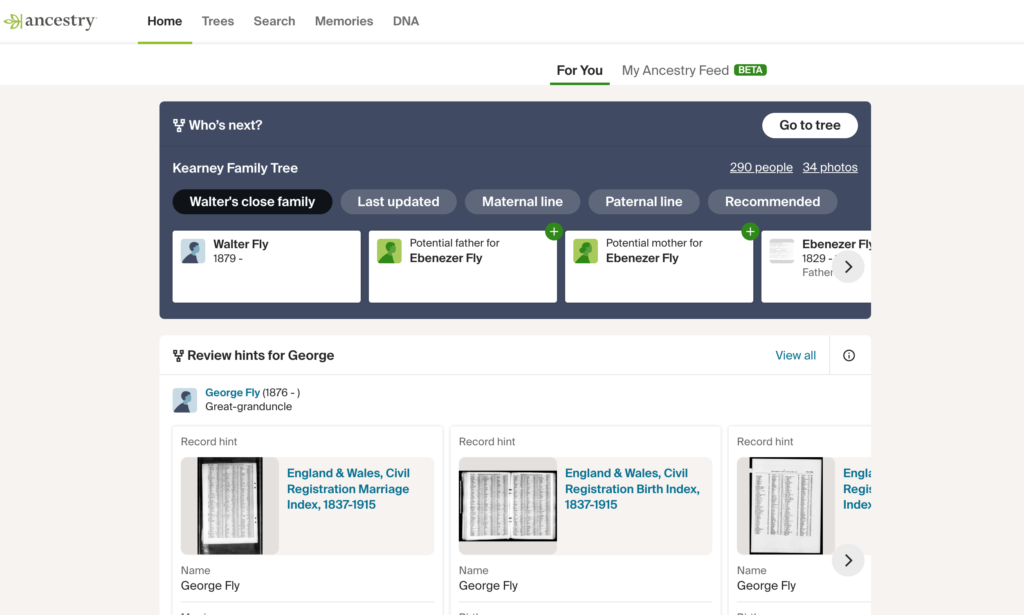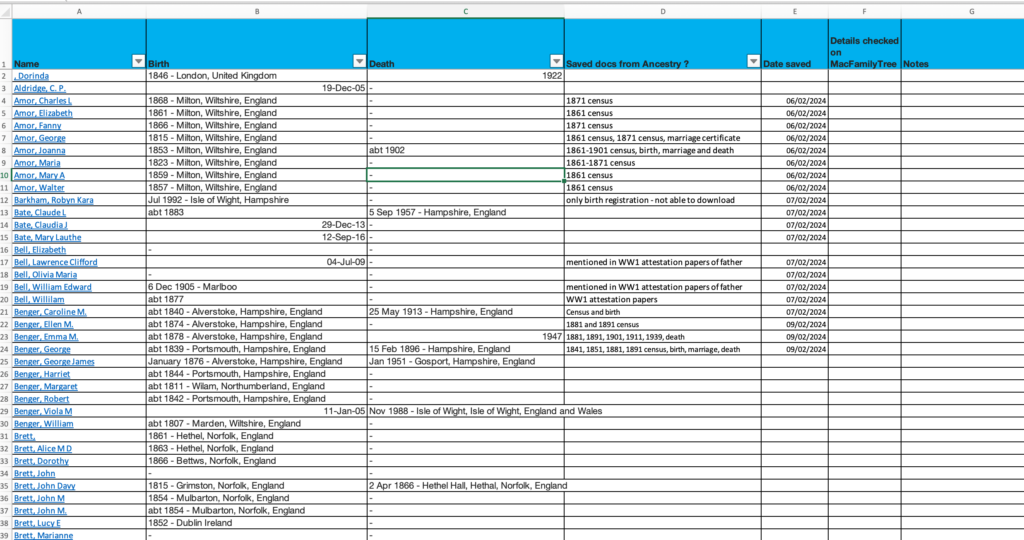About a year ago I took up the offer of a reduced subscription to Ancestry UK over the Christmas holidays. I have dabbled with Ancestry on and off and always been excited to discover new records. I never cancelled my subscription but a year later have thought that I probably should. Not that I don’t love researching my family history, but just need to save money.
I started to investigate saving all my hours of research on Ancestry. Like many others, I built my family tree and added records to each person. I thought I would give myself a target of downloading my records and cancelling my subscription at the end of the month. My family tree is quite modest, about 260 people but imagine my horror when I realised I was unable to download all the records I had found from the family tree or my shoebox (a safe place where I kept ‘possible’ records). It seems you can download a GEDCOM file but none of the associated records!
I already have a GEDCOM file hosted on my own website. It’s not updated very frequently but I became lazy when I started my Ancestry based family tree, and my own one now needs updating.
I wasn’t sure where to start trying to save my Ancestry records. I already had a folder of screenshots, saved emails and random documents saved on my own computer. I decided to re-organise my files and start from there.
First, I created family name folders, which contained individual folders for each member of the family. Then I was able to sort out all my existing saved documents and save them to the correct individual. This took a couple of evenings.
The second thing I did was to look at the documents I had saved to my Ancestry shoebox. This contained some great documents, as well as some not so useful documents. I deleted the documents which no longer needed saving and started downloading some of the more interesting documents. However, I soon realised that there were some duplicates with records already saved to my family tree. This took me one evening to realise, so I stopped working on my shoebox.
I decided I needed to be more systematic in my approach so went to the list of people saved to my tree and copied it to Excel.

This gave me a list of all the people in alphabetical order, alongside basic birth and death dates.

I added a few columns of my own, including document saved from Ancestry, and if I had checked the details against my own GEDCOM file. I soon realised this was not going to be a quick task finished in a month! Ancestry makes it difficult and time consuming to download any data. It is easy to see why, as they make money on your subscription. If you cancel your subscription you will still be able to see your family tree, but not the records you have saved to it.

Once I had my list of people, I was able to start downloading any record I had saved to that individual. I went to the person record, saw the number of records, opened each one and saved it to my computer. I changed the file name immediately to something simple, such as 1891 census or Civil Registration Birth, so the filenames had more meaning. Then saved the record to the individual family folder I had set up on my computer. I added a note to my spreadsheet of the records I had downloaded, as well as the date I had saved them.
It seems a mammoth task and it is quite dull but important for me to have copies of my research, not just so I can cancel my Ancestry subscription, but so I ‘own’ my research. I use Nextcloud to save my personal files and can access these on my iPhone so am able to check records wherever I am which is really useful. I started saving records last week and have done about 5% so far. But I know if I keep at the task for a few weeks, I will soon have much better records at my fingertips and am not beholden to paying anyone to access them. I’ve already re-discovered some interesting facts I had forgotten about so I think this will actually be a useful exercise.




